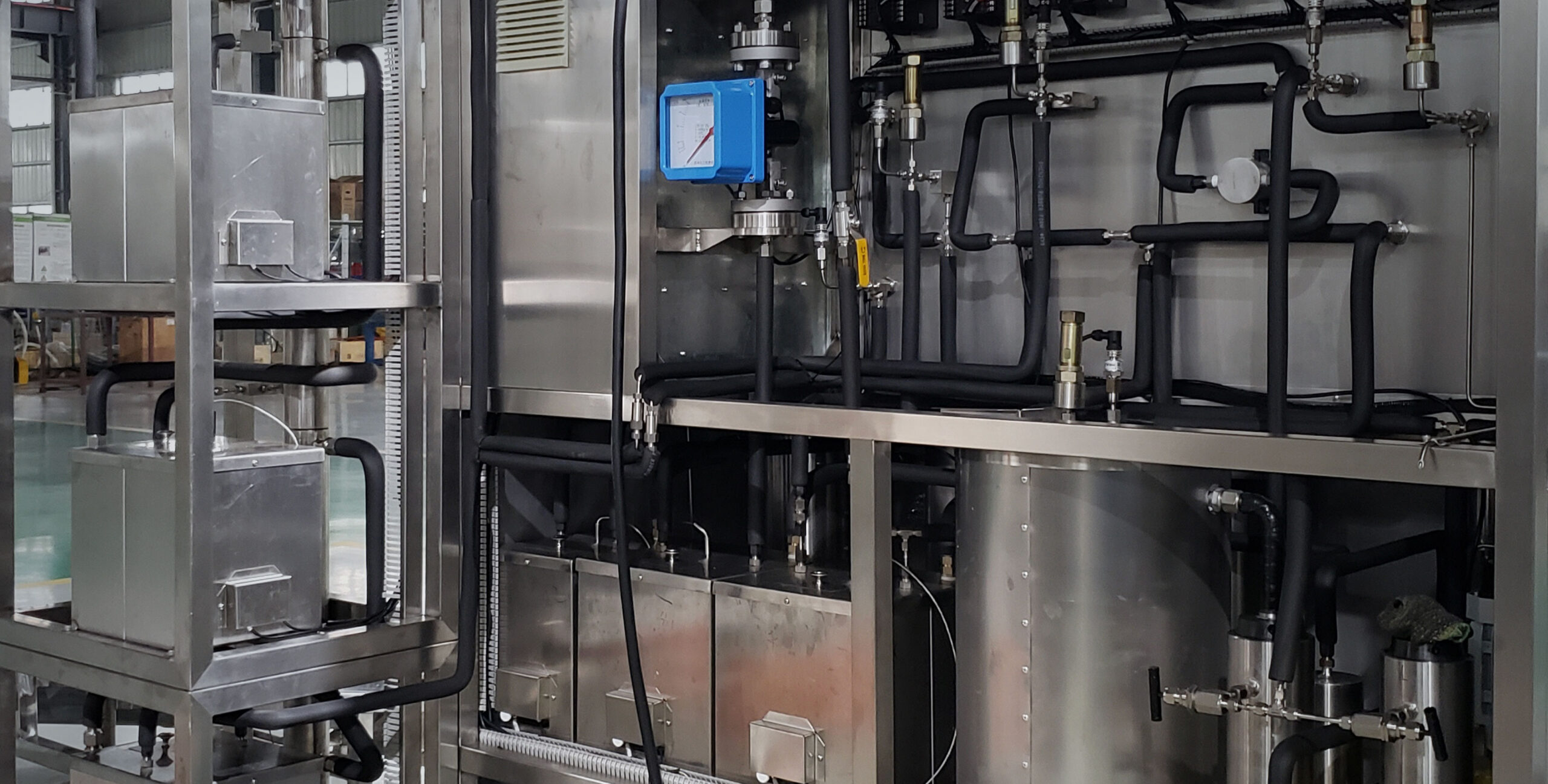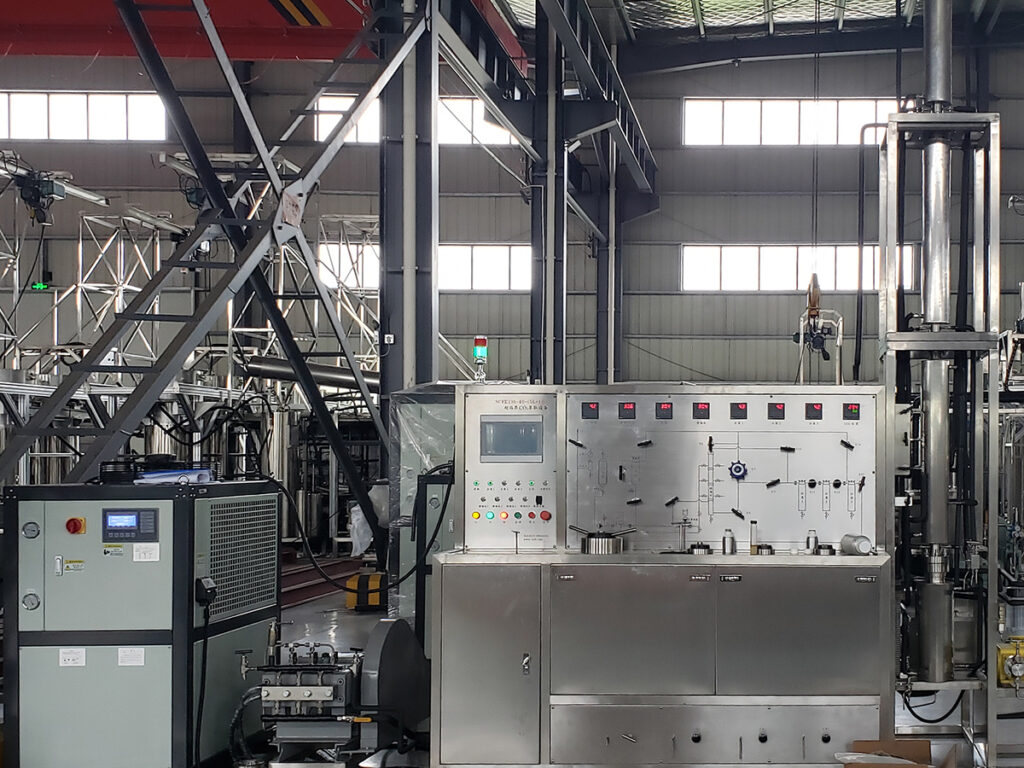
The most practical home use supercritical CO2 extractor
Small CO2 extraction machine
Machine for extracting essential oils for home use
This page introduces a compact supercritical CO2 extraction machine for labs, research, and small-scale production. Featuring a space-saving design, dual extraction vessels, precise control systems, and user-friendly operation, it offers an efficient and reliable solution for extracting essential oils, cannabinoids, and other high-value compounds from botanical materials.
Supercritical carbon dioxide (CO2) extraction is popular due to its efficiency, eco-friendliness, and safety. It is widely used in industries such as food, pharmaceuticals, and cosmetics. For laboratory research, small-scale production, or personal use, a small CO2 extraction machine (Compact CO2 Extraction Machines) is the ideal choice.
This article explores what a small CO2 extraction machine is, how it works, the available models, key parameters to consider, and essential buying tips. We also address frequently asked questions (FAQ) to help you make an informed decision.
Supercritical CO2 extraction has been applied to a wide range of natural raw materials, including herbs, spices, and medicinal plants. One notable example is the extraction of vanilla beans, where the process efficiently separates aromatic compounds without altering their natural profile.
What is a small CO2 extraction machine?
A small CO2 extraction machine is designed for laboratory research, pilot-scale production, or personal use. It extracts essential oils, active compounds, and other valuable substances from plant materials. With its compact size, lower investment costs, and flexible operation, this machine is perfect for research and small-batch extraction.
Unlike larger industrial CO2 extractors, small CO2 extraction machines allow precise control of extraction parameters, reduce raw material waste, and deliver highly accurate experimental results. These advantages make them a valuable tool for optimizing extraction processes before scaling up to full production.

Why choose a small CO2 extraction machine?
Small CO2 extraction machines offer several benefits that make them a preferred choice in various scenarios:
- Laboratory Research – Researchers can fine-tune extraction parameters before applying them to large-scale production.
- Small-Batch Production – Ideal for producing high-value essential oils and herbal extracts.
- Personal Use – Suitable for DIY enthusiasts who want to extract essential oils at home.
Key Advantages
- Precise Parameter Control – Ensures accurate and repeatable extraction results.
- Cost-Effective – Requires less capital investment and lower operating costs.
- Eco-Friendly – Uses CO2 as a solvent, eliminating the need for chemical additives.
- Scalable – Experimental data can be applied to large-scale production.
Main Components
A Lab-Scale Supercritical CO2 Extractor consists of several critical components that ensure efficient operation:
- High-Pressure Pump – Compresses CO2 into its supercritical state.
- Extraction Vessel – Holds the plant material and facilitates compound dissolution in CO2.
- Separation Vessel – Collects extracted compounds by adjusting pressure and temperature.
- Cooling System – Maintains stable temperatures for effective extraction.
- Automated Control Panel – Allows precise adjustments of extraction parameters.
Each component plays a crucial role in achieving high-quality extraction results.
Standard Models
Different models are available to suit varying extraction needs. Below is a list of standard models and their specifications:
| Model | Capacity (L) | Operating Pressure (MPa) | Extraction Vessels | Separation Vessels |
|---|---|---|---|---|
| L-500 | 0.5 | 50-105 | 1 | 2 |
| L-1000 | 1.0 | 50-105 | 1 | 2 |
| L-1000D | 1.0 × 2 | 50-105 | 2 | 2 |
| L-2000 | 2.0 | 50-105 | 1 | 2 |
| L-5000 | 5.0 | 50-105 | 1 | 2 |
| L-6000 | 1.0 + 5.0 | 50-105 | 2 | 2 |
Recommended Model: The L-6000 (5+1L) is the most versatile option. With two extraction vessels (1L and 5L), users can conduct small-scale experiments and scale up to larger capacities without purchasing additional equipment.
How to Choose the Right small CO2 extraction machine
When selecting a Lab-Scale Supercritical CO2 Extractor, consider the following key factors:
1. Extraction Capacity
- For laboratory research: A 500ml- 1000ml machine is sufficient.
- For small-scale production: A 2000ml- 5000ml model is ideal.
- For flexible use: The L-6000 (5+1L) allows easy capacity switching.
2. Pressure & Temperature Control
- Pressure Range: Machines typically operate between 50-105 MPa, ensuring versatility for different plant extractions.
- Temperature Range: Most systems support 30-85°C, accommodating various extraction needs.
3. Automation & Usability
- PLC Control System: Simplifies operation and ensures precise extraction.
- Adjustable Pressure Settings: Enhances safety and efficiency.
4. Cost & Budget
- Initial Cost: Prices vary from a few thousand to tens of thousands of dollars.
- Operating Costs: Consider models with CO2 recovery systems to reduce long-term expenses.
5. Safety Features
Look for machines with automatic pressure relief valves, real-time monitoring, and emergency shutdown functions to ensure safe operation.
Conclusion
A small CO2 extraction machine is a powerful tool for laboratories, small-scale producers, and home users. It offers precision, cost-effectiveness, and eco-friendliness, making it an excellent choice for extracting high-value compounds from plants.
When choosing a machine, consider factors like capacity, pressure control, automation, and safety features to ensure you get the best fit for your needs whether conducting research or producing essential oils, a well-chosen CO2 extraction machine will help you achieve high-quality results efficiently and safely.
Frequently Asked Questions (FAQ)
1. What industries use small CO2 extraction machines?
Lab-scale supercritical CO2 Extractors are commonly used in food, cosmetics, pharmaceuticals, and research laboratories for extracting essential oils, herbal compounds, CBD, and other plant-based ingredients.
2. Do small CO2 extraction machines require chemical solvents?
No. Supercritical CO2 extraction is a solvent-free, natural process that ensures purity and safety.
3. Can I use a small CO2 extraction machine at home?
Yes, but proper safety measures must be followed. Choose a machine designed for home use and ensure it has pressure control systems to prevent accidents.
4. How long does the extraction process take?
On average, a small-scale extraction takes 30 to 60 minutes, depending on the material and extraction settings.
5. Is maintenance complex?
No, maintenance is relatively simple. Regular cleaning, seal inspections, and filter replacements will keep the machine running smoothly.
6. Can a small CO2 extraction machine scale up to industrial production?
Yes. The extraction of data from small machines can be used to optimize large-scale production. Some models, like L-6000 (5+1L), allow users to switch between different capacities for pilot-scale validation.